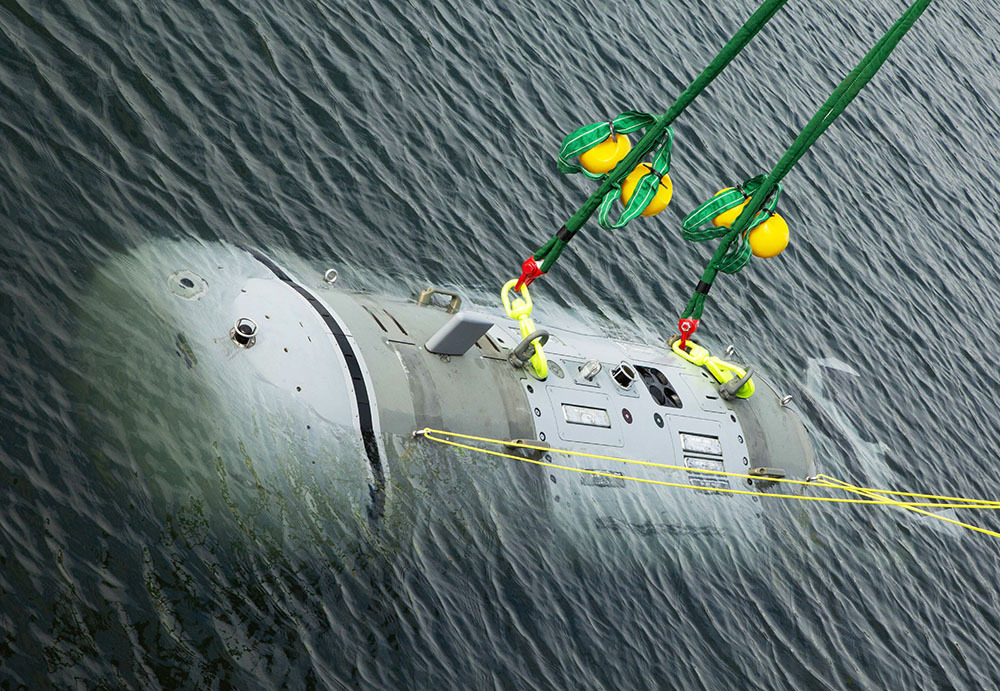The US Navy demonstrated an end-to-end intelligence preparation of the operational environment (IPOE) mission with a prototype of the Snakehead large displacement uncrewed undersea vehicle (LDUUV) last month, according to the Naval Sea Systems Command (NAVSEA).
China’s Own ‘Top Gun’ – Born To Fly – Promoting J-20 Stealth Fighter Jets To Showcase PLAAF’s Might
IPOE missions are a mandatory requirement for understanding an area of interest based on which a relevant course of action is planned to support the warfighter.
It includes creating detailed maps of the sea floor and identifying threats or other objects of interest, knowledge of which is essential for a submarine to enter or exit a particular area without being detected.
A team conducted the demonstration from the Naval Undersea Warfare Center (NUWC) Division Newport at the Narragansett Bay Test Facility on July 21.
The underwater drone conducted a ‘long distance ingress’ (entry into the area of interest at a long distance), performed a sonar survey box, and then egressed (exit) back to the test facility, “demonstrating a new milestone in total sortie endurance,” said NAVSEA.
The sortie was conducted using the ‘Draper Laboratory-developed Maritime Open Architecture Autonomy’ and a sonar data collecting technology provided by the Pennsylvania State University Applied Research Laboratory.
“The accomplishment of this mission in the system’s intended operational environment was a big step for the program to gain confidence in the vehicle software and hardware systems, as the team pushes toward extended endurance operations and layering additional system capability,” said Chris DelMastro, head of the Undersea Warfare Platforms and Payload Integration Department.
Snakehead LDUUV
Snakehead is a modular, reconfigurable, multi-mission LDUUV that can be deployed from submarines and surface ships. It provides guidance and control, navigation, situational awareness, propulsion, maneuvering, and sensors supporting the IPOE mission.
The unmanned undersea vehicle incorporates several innovative technologies, including lithium-ion fault tolerance (LiFT) batteries, advanced hull materials and sensors, and launch and recovery from submarines and surface vessels.

With roughly the same size as a SEAL delivery vehicle (SDV), the Snakehead is the US Navy’s largest submarine-launched UUV, with a payload capacity beyond small and medium UUVs.
Apart from IPOE missions, the LDUUV will also be used for mine countermeasure missions and electronic warfare (EW), per an earlier EurAsian Times report which notes that it will be equipped with an electronic support measures (ESM) system that will allow the LDUUV to collect information from radars and communication nodes of the adversary.
So far, the Snakehead has conducted 155 in-water sorties and more than 78 hours of runtime, using a government-owned and controlled modular open system architecture called the Topside Command, Control, and Communications (C3) software for mission planning, operations, and analysis.
Before the recent test, the LDUUV underwent 190 hours of hardware and software simulations to ensure that the mission parameters set by the vehicle were accurate.
US Navy Creating A Family Of UUVs
The US Navy is actively investing in the UUV capabilities to maintain superiority in the undersea domain.
The service aims to create a family of UUVs, working on several platforms, like the Orca Extra Large UUV (XLUUV) and the Lionfish Small UUV.
Developed by Boeing, the Orca XLUUV will initially focus on Concept of Operations (CONOPS) development, payload integration work, and mine warfare (MIW).
While in the future, the Orca could perform mine countermeasures (MCM), anti-submarine warfare (ASW), electronic warfare (EW), anti-surface warfare (ASUW), intelligence and surveillance, reconnaissance (ISR), and even strike missions.
The Lionfish, Small UUV program involves the Remus 300 drone from Huntington Ingalls Industries, designed to advance the ‘distributed maritime operations’ concept by conducting critical underwater missions.
China Also Working On UUVs
Navies of several countries are trying to incorporate UUVs, as they try to protect their personnel from risky environments. UUVs can go deeper underwater and stay for longer durations, which enables actionable intelligence in real-time without much human intervention.
Likewise, even China, which has historically been very poor in undersea warfare due to its noisy submarines and lack of experience hunting enemy submarines, is prioritizing the UUVs to achieve superiority in the undersea realm.
China’s UUV program came to light in October 2019 when the People’s Liberation Army (PLA) Navy fielded two large-size UUVs marked ‘HSU001’ during the 70th Anniversary Parade of the PLA.
Similar to the US Navy’s Snakehead, the HSU001 is also designed for IPOE and anti-submarine warfare. It is said to resemble the Soviet Oscar-class (Type 949) nuclear submarine in its shape.
The HSU001 also appears to have derived features from German UUV designs and the Russian Harpsichord UUV.
The HSU001 reportedly has some power source issues, which it tries to compensate for through an emphasis on ‘seabed warfare,’ meaning the vehicle can sit on the ocean floor for as long as 30 days and go unnoticed while passively observing the surroundings.
Reports suggest the HSU001 provides the PLA with intelligence gathering capabilities stretching up to the first and second island chains.
- Contact the author at tanmaykadam700@gmail.com
- Follow EurAsian Times on Google News